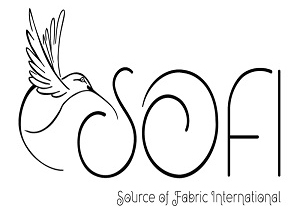Elastane fabric has become a cornerstone in the textile industry, celebrated for its exceptional stretch and recovery properties. This versatile material is widely used in activewear, swimwear, and everyday clothing, making it a sought-after choice for manufacturers and retailers alike. As demand for high-quality elastane fabric continues to rise, understanding the wholesale market becomes crucial for businesses looking to stay competitive.
Buying fabric in bulk not only offers cost savings but also ensures access to a wider variety of colors and styles. Retailers can enhance their product offerings by sourcing elastane from reputable wholesalers who provide reliable quality and timely delivery. In this article, we’ll explore the benefits of purchasing elastane fabric wholesale and how it can elevate a brand’s apparel line.
Overview of Elastane Fabric
Elastane fabric, known for its exceptional stretch and recovery, plays a vital role in the textile market. This fabric contains a high percentage of elastic fibers, which provides comfort and flexibility, making it ideal for various applications. It’s prominently used in activewear, swimwear, and everyday clothing where body movement is essential.
Elastane’s versatility comes from its ability to blend with other fibers such as cotton, polyester, and nylon. This blending enhances the fabric’s performance while maintaining the desired look and feel. The resulting textile offers durability and support, allowing it to retain its shape and resist wear over time.
In the wholesale market, elastane fabric presents several advantages. Bulk purchasing allows businesses to take advantage of lower prices and access a wider array of colors and styles. This variety enhances the overall product lineup, making it easier for brands to meet consumer demands in a competitive industry.
Understanding elastane fabric’s properties can streamline production processes and improve product quality. Brands that incorporate elastane into their offerings typically see increased customer satisfaction due to the fabric’s comfort and functionality.
Benefits of Elastane Fabric
Elastane fabric offers several advantages that make it a preferred choice in the textile industry. Its properties enhance clothing functionality, comfort, and performance.
Stretch and Flexibility
Elastane provides excellent stretch and flexibility. It can stretch up to five times its original length while returning to its shape without distortion. This ability makes elastane ideal for form-fitting garments like activewear and swimwear. It allows wearers to move freely, ensuring comfort during various activities.
Durability and Strength
Elastane exhibits remarkable durability and strength. It resists wear and tear from repeated use, maintaining its shape and elasticity over time. This resilience makes elastane suitable for everyday clothing that undergoes frequent washing and wearing. By combining elastane with other fibers, manufacturers enhance the overall strength and longevity of the fabric, resulting in clothing that lasts longer and performs better.
Wholesale Market for Elastane Fabric
The wholesale market for elastane fabric plays a crucial role in the textile industry. Businesses find it essential to understand this market to gain a competitive edge. Buying elastane in bulk opens the door to cost savings and a variety of colors and styles.
Key Suppliers
Wholesale suppliers of elastane fabric vary in size and reach. Some key suppliers include:
- Major Manufacturers: Large textile companies that produce elastane in significant quantities.
- Specialty Mills: Firms focused on producing high-quality elastane blends.
- Local Distributors: Regional suppliers that provide elastane fabric at competitive prices.
These suppliers often offer options for customization, enabling brands to meet specific needs in their apparel lines.
Pricing Trends
Pricing for elastane fabric can fluctuate based on several factors. Current trends show:
| Factor | Impact on Pricing |
|---|---|
| Demand | High demand can increase prices. |
| Raw Material Costs | Changes in raw materials affect costs. |
| Production Capacity | Limited capacity may drive prices up. |
| Competition | More suppliers can lower prices. |
Overall, brands need to monitor these trends to make informed purchasing decisions.
Applications of Elastane Fabric
Elastane fabric finds wide use across several sectors due to its unique properties. This section covers its applications in the fashion industry and sportswear.
Fashion Industry
Elastane fabric plays a key role in the fashion industry. Designers use it to create form-fitting garments that provide comfort and flexibility. Common items include dresses, leggings, and jeans, which benefit from elastane’s stretch while maintaining their shape. Blending elastane with materials like cotton or polyester enhances style and wearability, making garments more appealing to consumers. Wholesale opportunities allow brands to access various colors and styles, encouraging creativity and experimentation in fashion collections.
Sportswear
In sportswear, elastane fabric is essential for performance and comfort. It allows athletes to move freely during activities, coping well with intense physical demands. Activewear such as shorts, tops, and compression gear often contains elastane, supporting muscle movement and improving fit. The fabric’s durability means it can endure frequent washing and wearing without losing its stretchiness. Purchasing elastane in bulk improves the ability of brands to meet consumer needs while optimizing production costs, effectively enhancing sportswear lines effectively.
Conclusion
Elastane fabric stands out as a game-changer in the textile industry. Its unique properties not only enhance the comfort and fit of garments but also boost their durability and longevity. For businesses looking to thrive in a competitive market, understanding the wholesale dynamics of elastane, linen fabric, cotton fabric, and bullet fabric is essential.
By sourcing elastane and fabric bolts wholesale in bulk, brands can access a diverse range of styles and colors while optimizing their production costs. This strategic approach not only meets consumer demands but also elevates the overall quality of their apparel offerings. Whether dealing with elastane, bolts of fabric, or other textiles, embracing high-quality materials will undoubtedly lead to greater customer satisfaction and a stronger market presence.
Frequently Asked Questions
What is elastane fabric?
Elastane, also known as spandex or Lycra, is a synthetic fiber known for its exceptional stretch and recovery properties. It can stretch up to five times its original length and return to its shape without distortion, making it ideal for activewear, swimwear, and everyday clothing.
Why is elastane important in the textile industry?
Elastane adds flexibility, comfort, and durability to garments. Its ability to blend with other fibers enhances overall performance, while its strength helps apparel maintain shape and resist wear and tear, ultimately improving product quality and customer satisfaction.
How does buying elastane fabric in bulk benefit businesses?
Purchasing elastane in bulk can lead to significant cost savings for businesses, offering a wider selection of colors and styles. This strategy allows brands to remain competitive in the market by optimizing production costs and better meeting consumer demands.
What applications does elastane have in fashion?
In the fashion industry, elastane is commonly used in form-fitting garments such as dresses, leggings, and jeans. Its blend with other materials improves comfort and style, enabling brands to offer versatile apparel that meets various consumer preferences.
How is elastane used in sportswear?
Elastane is crucial for sportswear, providing athletes with the freedom of movement they need during intense activities. Its durability allows activewear to withstand repeated use without losing elasticity, ensuring comfort and performance for sports enthusiasts.
What suppliers are available for elastane fabric?
Key suppliers of elastane fabric include major manufacturers, specialty mills, and local distributors. These suppliers often offer customization options to meet specific brand needs, allowing businesses to create unique apparel that aligns with their target market.
How can businesses stay informed about elastane pricing trends?
Businesses can track pricing trends by monitoring factors such as demand, raw material costs, production capacity, and competition in the market. Staying informed helps brands make educated purchasing decisions and optimize their procurement strategies for elastane fabric.


